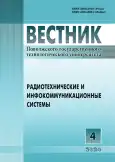Method for fixing a vibrating acoustic emitter in a bone conduction hearing aid to minimize sound ener-gy loss
- Autores: Arutyunov S.D.1, Yuzhakov A.A.2, Astashina N.B.3, Elovikov A.M.3, Baidarov A.A.2,3, Storozhev S.A.2
-
Afiliações:
- "Russian university of medicine" of the Ministry of Health of the Russian Federation
- Perm National Research Polytechnic University
- Perm State Medical University named after Academician E.A. Wagner
- Edição: Nº 4 (2024)
- Páginas: 30-38
- Seção: Telecommunication and radio engineering
- URL: https://journals.rcsi.science/2306-2819/article/view/284979
- DOI: https://doi.org/10.25686/2306-2819.2024.4.30
- EDN: https://elibrary.ru/DGOVHM
- ID: 284979
Citar
Texto integral
Resumo
Introduction. This paper addresses the pressing challenge of developing effective bone conduction hearing aids. Existing methods for securing vibrating acoustic emitters in such devices have several drawbacks, including unstable connections, sound energy loss, and limited options for individual adjustments. The aim of this study is to design a fixation device for a vibrating acoustic emitter in a bone conduction hearing aid and examine how the pressure connection parameters in the "sound emitter – ear implant" system affect the quality of the transmitted sound. Technical Features of the Fixation Device. A novel fixation device has been developed, incorporating a titanium implant and a polymer ring. This design allows for adjustable pressure between the emitter and the bone, ensuring a secure and stable connection. Additionally, a personalized approach to abutment design—utilizing a parametric computer model created in a three-dimensional design system (such as Compass3D©)—optimizes prosthesis geometry for individual patients. Results. The amplitude-frequency response (AFR) and phase-frequency response (PFR) were measured for two prototype designs: a screw implant with spherical abutments and a screw implant with a vibration-conducting platform. Experimental analysis demonstrated that the proposed innovative fixation method eliminates AFR dips at mid frequencies, which is crucial for speech perception, smooths AFR and PFR curves, resulting in a more natural and balanced sound, reduces AFR nonlinearity by more than 6 dB (17%). Conclusion. The proposed fixation device exhibits high efficiency and significant potential for application in bone conduction hearing aids. Future research will focus on assessing the long-term stability of the system and developing customized solutions tailored to individual patients' needs.
Texto integral
Sobre autores
Sergey Arutyunov
"Russian university of medicine" of the Ministry of Health of the Russian Federation
Email: uz@at.pstu.ru
ORCID ID: 0000-0001-6512-8724
Código SPIN: 1052-4131
Doctor of Medical Sciences, Professor, Head of the Department of Propaedeutics of Dental Diseases
Rússia, MoscowAlexander Yuzhakov
Perm National Research Polytechnic University
Autor responsável pela correspondência
Email: uz@at.pstu.ru
ORCID ID: 0000-0003-1865-2448
Código SPIN: 4820-8360
Doctor of Engineering Sciences, Professor, Head of the Department of Automation and Telemechanics
Rússia, PermNatalya Astashina
Perm State Medical University named after Academician E.A. Wagner
Email: uz@at.pstu.ru
ORCID ID: 0000-0003-1135-7833
Código SPIN: 6119-8171
Doctor of Medical Sciences, Professor, Head of the Orthopedic Dentistry Department
Rússia, PermAleksey Elovikov
Perm State Medical University named after Academician E.A. Wagner
Email: uz@at.pstu.ru
Código SPIN: 9015-9650
Doctor of Medical Sciences, Professor, Head of the Otolaryngology Department
Rússia, PermAndrey Baidarov
Perm National Research Polytechnic University; Perm State Medical University named after Academician E.A. Wagner
Email: uz@at.pstu.ru
ORCID ID: 0000-0003-3888-3358
Código SPIN: 9101-6981
Candidate of Engineering Sciences, Vice-Rector for Information Technology and Innovative Development, Head of the Department of Medical Informatics and Medical Systems Management of Perm State Medical University named after Academician E.A. Wagner; Associate Professor at the Department of Automation and Telemechanics of Perm National Research Polytechnic University. Research interests – adaptive information and control systems based on neural technology, control systems and artificial intelligence systems, service robotics, network technologies
Rússia, Perm; PermSergey Storozhev
Perm National Research Polytechnic University
Email: uz@at.pstu.ru
ORCID ID: 0009-0002-7019-7972
Código SPIN: 9024-8830
Candidate of Engineering Sciences, Associate Professor at the Department of Automation and Telemechanics
Rússia, PermBibliografia
- Al-Qahtani K., Aleisa M., Albader A. et al. External auditory canal atresia: Surgical cor-rection compared with bone anchored hearing device. J. Taibah Univ. Medical Sci. 2014;4:307–310. doi: 10.1016/j.jtumed.2014.05.005
- Casanova M.J., Ferraz S.M., Coutinho M.B. et al. Hearing rehabilitation with osseointegrated hearing implant in bilateral congenital external auditory canal atresia. Acta Otorrinolaringol. Esp. 2021;5:288–294. doi: 10.1016/j.otoeng.2020.08.004
- Lippmann E., Pritchett C., Ittner C., Hoff S.R. Transcutaneous Osseointegrated Implants for Pediatric Patients With Aural Atresia. JAMA Otolaryngol. Head Neck. Surg. 2018;8:704–709. doi: 10.1001/jamaoto.2018.0911.
- Ruhl D.S., Kesser B.W. Atresiaplasty in Con-genital Aural Atresia: What the Facial Plastic Surgeon Needs to Know. Facial Plast. Surg. Clin. North Am. 2018;1:87–96. doi: 10.1016/j.fsc.2017.09.005
- Kruyt I.J., Bakkum K.H.E., Caspers C.J.I., Hol M.KS. The efficacy of bone-anchored hearing implant surgery in children: a system-atic review. Int J Pediatr Otorhinolaryngol. 2020;132:109906. doi: 10.1016/j.ijporl.2020.109906; EDN: AANDII
- Svrakic M., Vambutas A. Medical and audio-logical indications for implantable auditory devices. Otolaryngol Clin N Am. 2019;52:195-210. doi: 10.1016/j.otc.2018.11.001
- Ghossaini S.N., Roehm P.C. Osseointegrated auditory devices bone-anchored hearing aid and PONTO. Otolaryngol Clin N Am. 2019; 52:243-51. doi: 10.1016/j.otc.2018.11.005
- Fan X., Wang Y., Wang P., et al.Aesthetic and hearing rehabilitation in patients with bilateral microtiaatresia. Int J Pediatr Otorhinolaryngol. 2017; 101:150-7. doi: 10.1016/j.ijporl.2017.08.008
- McKinnon B.J., Jahrsdoerfer R.A. Congenital auricular atresia: update on options for inter-vention and timing of repair. Otolaryngol Clin N Am. 2002;35:877-90. doi: 10.1016/S0030-6665(02)00058-0
- Genc S., Kahraman E., Ozel H.E. et al. Micro-tia and congenital aural atresia. J Craniofac Surg. 2012; 23:1733-5. doi: 10.1097/SCS.0b013e318254351c
- Wang Yuhua, Zhu Guangli, Zhang Lei et al. Surface dissolution of spodumene and its role in the flotation concentration of a spodumene ore. Minerals Engineering. 2018;125:120-125. doi: 10.1016/j.mineng.2018.06.002
- Анализ системы «излучатель-имплант» бионического протеза уха и её влияния на звуковые характеристики / С. Д. Арутюнов, А. А. Южаков, И. И. Безукладников и др. // Вестник Поволжского государственного технологического университета. Сер.: Ра-диотехнические и инфокоммуникационные системы. 2023. № 4(60). С. 77-86. doi: 10.25686/2306-2819.2023.4.77; EDN: RJTLKU
- Влияние параметров крепления биониче-ского уха на характеристики звукового сиг-нала / С. Д. Ару тюнов, А. А. Южаков, И. И. Безукладников и др. // Вестник Поволжско-го государственного технологического университета. Сер.: Радиотехнические и инфокоммуникационные системы 2023. № 3(59). С. 74-84. doi: 10.25686/2306-2819.2023.3.74 EDN: HDVIFN
Arquivos suplementares













